
Diving into the enchanting world of unique wildlife, the quokka captures hearts with its endearing and seemingly permanent smile. Known as the "world's happiest animal," the quokka’s friendly demeanor has catapulted it to fame, particularly on social media, where its cheerful face continues to charm many. As a strange animal species, this small marsupial, about the size of a domestic cat, remains the sole representative of the genus Setonix. Quokkas are native to Rottnest Island and select parts of southwestern Australia, inhabiting areas where their population ranges from 7,500 to 15,000 individuals.
Primarily herbivorous, quokkas sustain themselves by consuming leaves, grasses, and sometimes fruits. Their foraging typically takes place during dawn and dusk. Being highly social creatures, they thrive in small family groups, displaying non-territorial behavior with overlapping home ranges, a characteristic that fosters communal living. An unusual animal behavior observed in quokkas is their affinity for recently burned habitats. These areas, transformed by fire within the last decade, offer a bounty of food sources, illustrating the unique animal adaptations that have allowed them to survive in dynamic environments.
Unfortunately, quokkas face several threats, predominantly due to habitat loss and predation by non-native species. Conservation efforts, such as habitat restoration and stricter wildlife interaction regulations, have been initiated to safeguard their existence. The continual impact of environmental changes and human activities on quokka populations has spurred discussions on animal conservation, underscoring the importance of protecting these delightful creatures. As quirky residents of Australia’s unique wildlife, quokkas remind us of the delicate balance within ecosystems and the need for comprehensive efforts to preserve such rare animals for future generations. For more insights into why these charming creatures are considered nature's smiling icon, feel free to explore further.
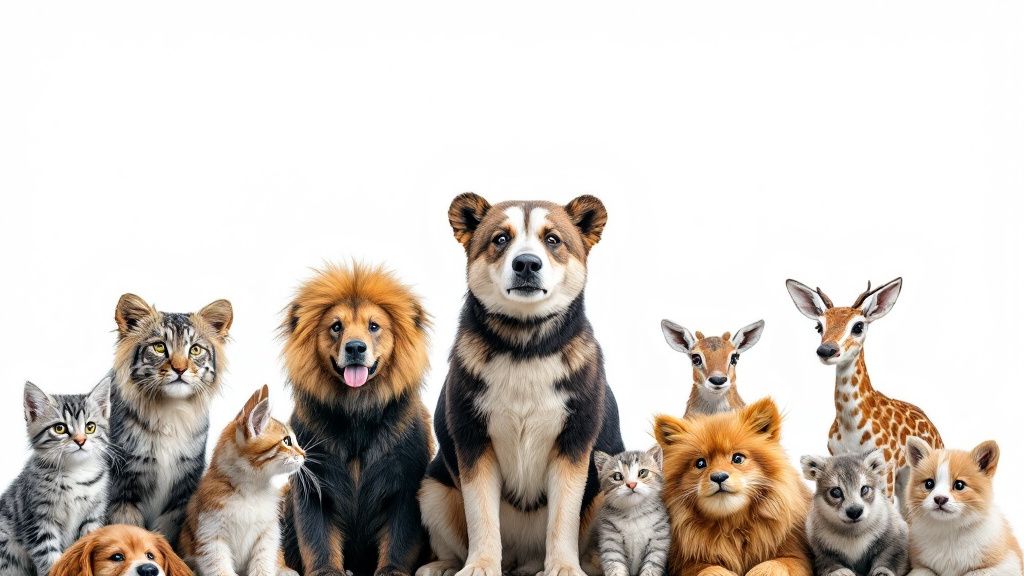
The world of unique wildlife is a spectacle of fascinating features, where creatures like the quokka exhibit adaptations perfectly suited for their survival. These rare animals, with their captivating quirks, often ignite intrigue due to the extraordinary traits that distinguish them from their more common counterparts. The quokka, although small, has thrived in its native habitat through a variety of unique animal adaptations that allow it to flourish amid challenges.
One of the most remarkable traits of the quokka is its herbivorous diet, consisting mainly of plant materials such as leaves, roots, fruits, and flowers. This dietary preference has led to the development of specialized teeth that enable them to efficiently chew and extract nutrients from tough vegetation, highlighting their adaptation to a plant-based lifestyle. Additionally, their ability to extract moisture from their diet means quokkas can endure extended periods without food or water, an essential adaptation to the arid conditions of their environment. On Rottnest Island, quokkas take advantage of water-retaining succulents, further demonstrating their resourcefulness in drier climates.
Compact yet resilient, quokkas measure between 40 to 53 cm in length and weigh around 2.5 to 5 kg, which aids their maneuverability through dense vegetation where they often create paths for foraging and escaping predators. Their predominantly nocturnal nature also serves as a survival mechanism, enabling them to escape daytime predators and conserve water by being active during cooler temperatures. This daily rhythm not only safeguards them from becoming prey but also allows for a more efficient utilization of scarce resources.
Regarding social behavior, quokkas form large family groups that encourage calm interactions, reducing competition and stress. This social structure is crucial for preserving their health and increasing their resilience against environmental pressures. However, despite their adaptations, conservation remains essential due to threats from predators like foxes and feral cats, as well as human-induced challenges.
The quokka’s unique status as the only member of the genus Setonix highlights the importance of ongoing conservation efforts. Protecting these fascinating animals ensures the preservation of their unique features for future generations, providing us with continued insights into the extraordinary strategies life creates to endure diverse ecosystems. To further explore the intriguing aspects of these remarkable creatures, read more about how they navigate their environment in challenging conditions here. Such adaptations underline the need for robust measures to safeguard their habitats, emphasizing the delicate balance within ecosystems.
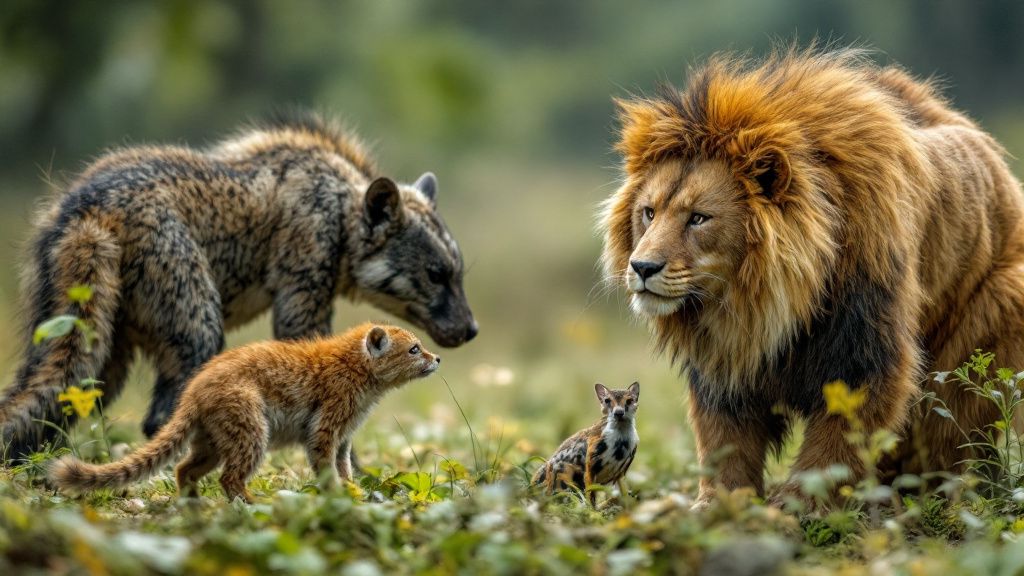
As we look to the future, the outlook for uncommon species like the quokka is fraught with uncertainties. The potential impacts of evolving climate conditions and increasing human interference pose significant challenges, threatening to alter their populations. With climate change currently affecting over 10,967 species on the IUCN Red List of Threatened Species, the risk of extinction escalates, demanding urgent and robust animal conservation strategies.
The quokka, along with many rare animals, may experience shifts in their natural habitats due to changing climate patterns. As these shifts occur, the necessity for sustainable environments becomes paramount to prevent these unique creatures from becoming endangered species. Furthermore, conservation strategies need to evolve to effectively address both immediate and long-term challenges. A comprehensive meta-analysis highlights that conservation actions are essential for the survival of more than 44,000 species at risk of extinction, underscoring the vital role they play in sustaining ecosystems that serve billions of people.
Emerging trends in biodiversity conservation for 2025 stress the importance of long-term planning across multiple sectors to tackle large-scale changes in land use and climate impacts. Innovative approaches are necessary to manage both the positive and negative effects on biological conservation, as identified in the 2024 horizon scan, which outlines key issues for biodiversity conservation. The current extinction rates, estimated to be 10-100 times greater than those observed over the last 10 million years, highlight the critical phase we are in concerning biodiversity loss and the importance of conservation efforts.
The World Conservation Society reports that emerging trends towards population stabilization and urbanization are reshaping wildlife and conservation strategies. As more species respond to climate change by altering their morphology, behavior, and geographic ranges, the adaptive challenges they face continue to grow. It is predicted that more than 1 million species may face extinction in the coming decades, amplifying the urgency for effective conservation interventions.
Therefore, it is imperative that we address human-caused threats and climate impacts to protect vulnerable species. The efforts made by organizations such as NOAA Fisheries and their partners focus on mitigating these threats, aiming to create a sustainable future for unique wildlife. With a concerted push towards comprehensive conservation, it is possible to safeguard unique animal species like the quokka, preserving their presence in our world and ensuring they remain a part of our shared natural heritage. For additional information on how climate change exacerbates threats to species, you can explore this resource here.
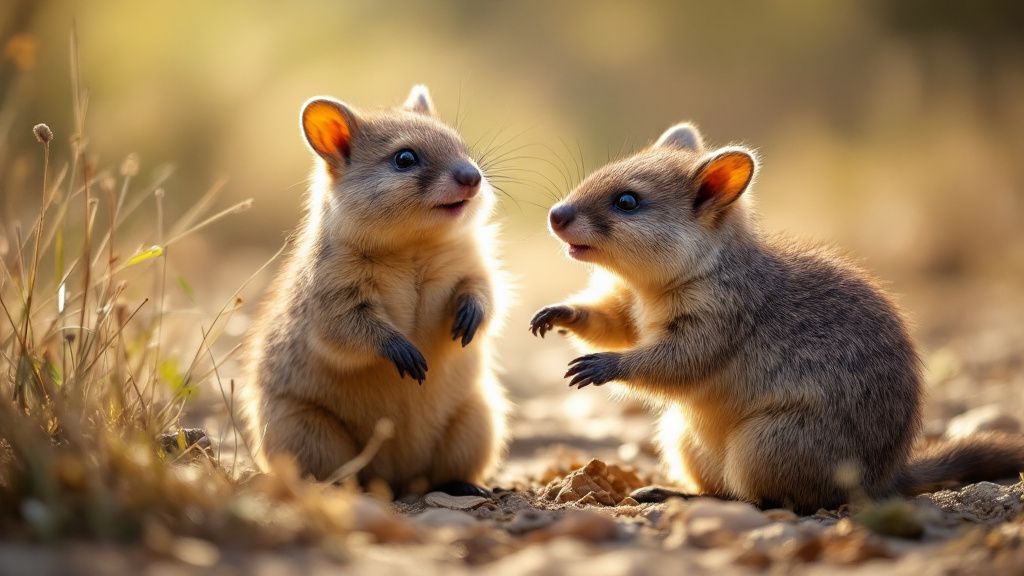
Quokkas, with their intriguing behaviors, offer a captivating glimpse into how unique animals interact with their ecosystems to ensure survival. Their nocturnal lifestyle is a primary example of such behavior, staying active at night to evade predators during the day. This adaptation not only protects them but also defines how they navigate their habitat, minimizing risks while maximizing their activity during safer, cooler hours.
Another curious behavior is their reproductive strategy. Female quokkas have the remarkable ability to pause the development of their embryos, an adaptation that ensures the continuation of their lineage under fluctuating environmental conditions. This tactic allows for flexibility in responding to unpredictable changes, such as food scarcity or harsh weather, optimizing their reproductive success.
Socially, quokkas exhibit calm and cooperative interactions with one another, rarely engaging in territorial disputes. Their social cohesion aids in building a community spirit among groups, which enhances their survival prospects by fostering unity and reducing conflict, ultimately leading to more stable group dynamics. As herbivores, they contribute significantly to their ecosystem. By feeding on various plants, quokkas play a pivotal role in plant growth and maintaining biodiversity. Their grazing promotes plant health and the propagation of diverse flora in their habitats.
Their curiosity and willingness to engage with humans have not only broadened their appeal but also increased their vulnerability. On Rottnest Island, their interactions with tourists have become a well-known attraction, drawing attention to their plight and the importance of conservation. Their ability to climb proficiently further equips them to escape predators and access food sources, highlighting their adaptability and resourcefulness in the wild.
Quokkas demonstrate strategic foraging behaviors, aiming to balance efficient food gathering with minimizing exposure to predators. This survival strategy ensures they optimize their energy intake while maintaining safety, a critical aspect of their day-to-day existence. Their unique facial structure, which projects a perpetual smile, has solidified their reputation as the "world's happiest animal." This charming demeanor not only enhances their appeal worldwide but has also boosted conservation awareness, serving as an emblematic reminder of the pressing need to protect vulnerable species from threats like habitat destruction and introduced predators.
Through such behaviors, quokkas exemplify the intricate balance between survival and interaction within their ecosystems, offering valuable insights into the complexities of ecological dynamics. To delve deeper into the fascinating world of quokka behaviors and their contributions to their ecosystem, you can find more detailed information here. These behaviors underscore the essential strategies by which quokkas sustain themselves and thrive, even as the environment around them continues to evolve.
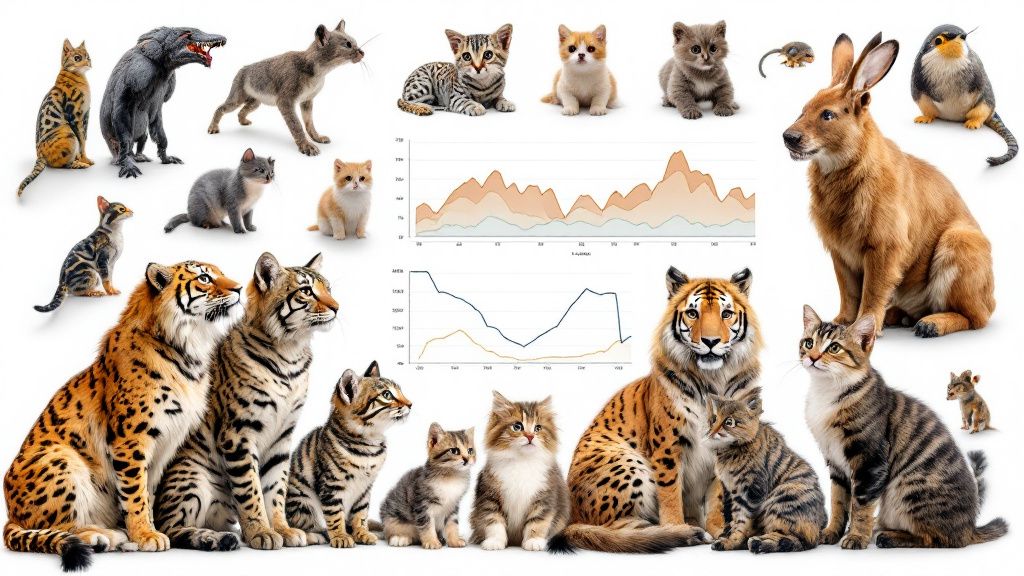
The current landscape of exotic pets and wildlife conservation presents a dynamic yet contentious narrative of human-animal interaction. In the United States alone, the exotic pet industry is valued at over $15 billion, with an estimated 17.6 million exotic pets occupying homes nationwide. This growing affinity for exotic pets is mirrored by the fact that approximately 9 million households own at least one such pet, indicating a notable shift in pet ownership preferences.
Major cities like Los Angeles, New York City, Dallas, and Miami have emerged as frontrunners in the importation of exotic pets, illustrating regional preferences and trends. The allure of owning rare and unique animals is propelled, in part, by social media, which has also transformed consumer behaviors. There is an increasing pivot from traditional pet stores to digital marketplaces, facilitating this demand for uncommon pets.
However, the implications of this trend extend beyond mere ownership. The rise in exotic pet adoption has brought ecological concerns to the forefront, particularly regarding biological invasions. The release of non-native pets into the wild poses significant ecological risks, disrupting local ecosystems and threatening native biodiversity. This issue underscores the tension between individual desires and broader conservation priorities.
Ethical considerations are also paramount, particularly when evaluating the treatment and living conditions of these animals. The case of tigers in the U.S. exemplifies this dilemma, with approximately 7,000 tigers kept as pets, of which only about 500 live in accredited facilities. This situation raises crucial questions about animal welfare and the responsibilities of exotic pet ownership.
Globally, increased demand for exotic pets drives a multibillion-dollar industry, trading billions of individuals from thousands of species annually. This burgeoning market often places commercial interests at odds with wildlife protection, highlighting the need for stringent regulatory frameworks. In response, several countries are enacting tougher regulations on the trade and ownership of exotic animals, aiming to reconcile commercial interests with the pressing need for sustainable wildlife conservation.
Understanding these trends is paramount for ensuring responsible exotic pet ownership that aligns personal aspirations with ecological stewardship. Balancing human interest with wildlife conservation is not only vital for the wellbeing of these unique wildlife species but also crucial for maintaining ecological balance. For a closer look at how this global demand continues to evolve, you can explore further insights here.
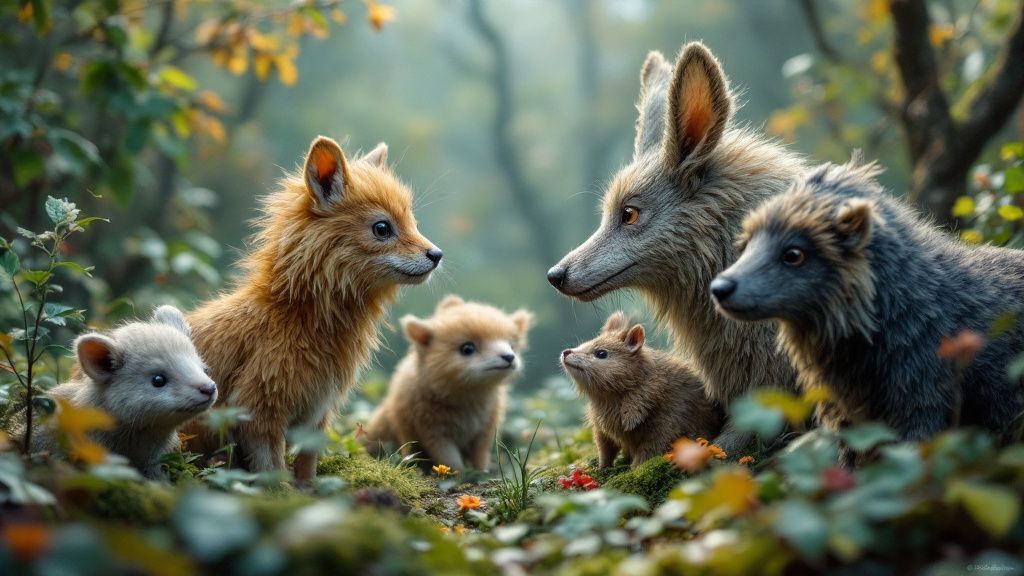
Envisioning the enchanting world of unique animals such as quokkas brings to life the vibrant role these creatures play within their ecosystems. Often described as the "happiest animals on earth" due to their perpetual smiles and engaging demeanor, quokkas have become stars of social media, captivating audiences worldwide with their charming expressions. Visualizing quokkas as characters in a whimsical tale highlights their distinct place in nature, akin to a kaleidoscope painting an ever-evolving landscape.
Quokkas inhabit the limited regions of Western Australia, particularly the iconic Rottnest Island and the Two Peoples Bay Nature Reserve. These small marsupials, weighing between 2.5 to 5 kilograms and measuring approximately 40 to 54 centimeters in length, share their nocturnal adventures through dense grasslands, feeding on an herbivorous diet of grasses, leaves, and fruits. Their nocturnal lifestyle not only aids in foraging but also helps them dodge predators in the cool, protective veil of night.
Exploring the vivid impressions these creatures leave underscores the vital importance of conserving their habitats. Despite their high spirits, quokkas are vulnerable and face ongoing threats to their population and environment. Conservation efforts must continue to balance their popularity with ecological preservation, highlighted by measures on Rottnest Island designed to minimize human impact, such as prohibiting feeding or handling. This approach ensures that tourists can enjoy viewing quokkas without jeopardizing their natural behavior and wellbeing.
The intrinsic value of quokkas extends beyond their delightful antics. Their unique anatomy, graced with a round head, small ears, and large dark eyes, amplifies their appeal and reflects their adaptation to their environment. These features make them not just fitting representatives of nature’s oddities but also crucial players in the biodiversity of their habitats.
Sharing the joys and peculiarities of quokkas through vivid storytelling can ignite passions for their preservation and encourage deeper respect for all species that adorn Earth's tapestry. The playful vitality of these animals offers a reminder of the interconnectedness of life, urging us to safeguard the diversity that enriches our planet. For more about how these beloved marsupials continue to win hearts and drive conservation efforts, explore here. By appreciating them not just as picturesque characters but as vital components of their ecosystems, we can foster meaningful change and ensure their legacy endures for generations to come.
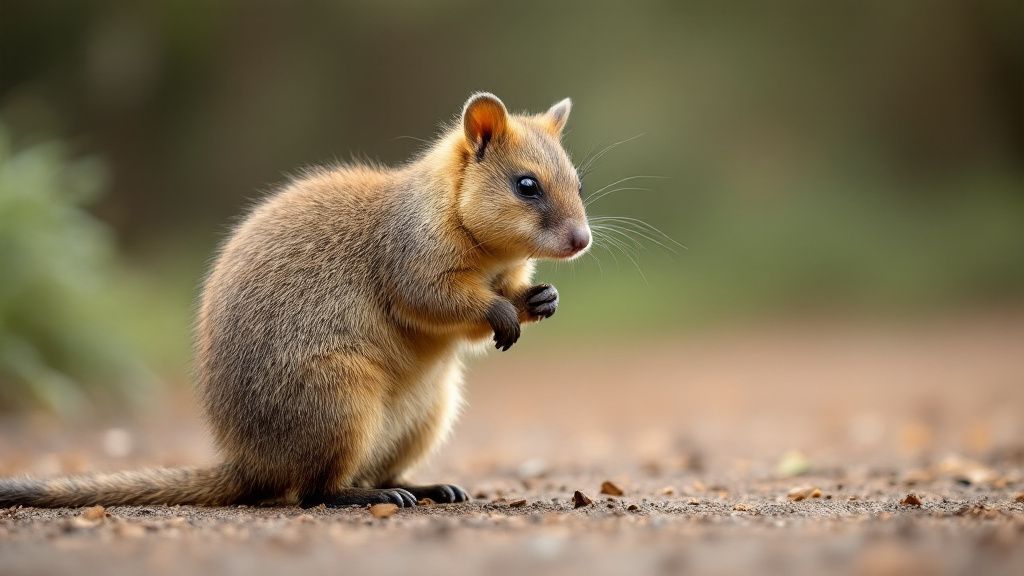
The conservation debate surrounding unique animals such as quokkas reflects a complex interplay of ecological responsibility, ethical considerations, and human interest. Proponents of traditional conservation emphasize the intrinsic value of these animals as vital components of biodiversity. They advocate for protecting natural habitats, rather than promoting captive breeding or the exotic pet trade, to ensure these species thrive in their native ecosystems. Conservation biologists often stress that true preservation lies in safeguarding the environments where these creatures naturally occur, thus maintaining ecological balance and supporting biodiversity.
Meanwhile, the allure of exotic pets continues to captivate enthusiasts worldwide. This interest is supported by those who argue that, under strict regulation and within controlled environments, these animals can serve as educational ambassadors, enhancing research opportunities and sparking new discoveries. Some exotic pet owners actively participate in conservation endeavors, leveraging their pets to raise public awareness about endangered species and the critical importance of habitat preservation. In this light, the captive-bred trade, comprised of species that are commonly found in the wild, is positioned as a less harmful alternative that can potentially align with conservation goals.
However, the exotic pet trade, particularly its illegal segment, poses significant threats to global biodiversity. About four out of five exotic animals caught in illegal trade perish during transit or within a year of captivity, highlighting the grave repercussions of this industry on animal welfare and population stability. Such statistics magnify the ethical concerns tied to keeping exotic pets, raising debates about their welfare and psychological wellbeing in captivity. The increase in demand for rare species has intensified illegal smuggling, further jeopardizing conservation efforts and adding to the plight of species facing extinction due to habitat loss and over-exploitation.
Addressing these issues necessitates robust conservation messaging, crucial for curbing demand for exotic pets and engaging the public in broader wildlife conservation efforts. By understanding the motivations behind exotic pet ownership, more effective strategies can be developed to address unsustainable trade practices. The ethical dimensions of this debate are important, as they underscore not only the welfare of captive animals but also the broader implications on ecological integrity.
Ultimately, while some exotic animals may adapt to life as pets, meeting the needs of many species in captivity remains difficult, leading to welfare concerns and ongoing dialogue among conservationists. In navigating these conflicting viewpoints, it becomes clear that balancing admiration with ethical responsibility is foundational to safeguarding the future of unique wildlife. Examining the impact of the exotic pet trade on biodiversity can provide valuable insights into this ongoing conversation; to explore this perspective further, consider this resource here.
Get free resources, early access to new features and updates.
No spam. Just fun educational emails!